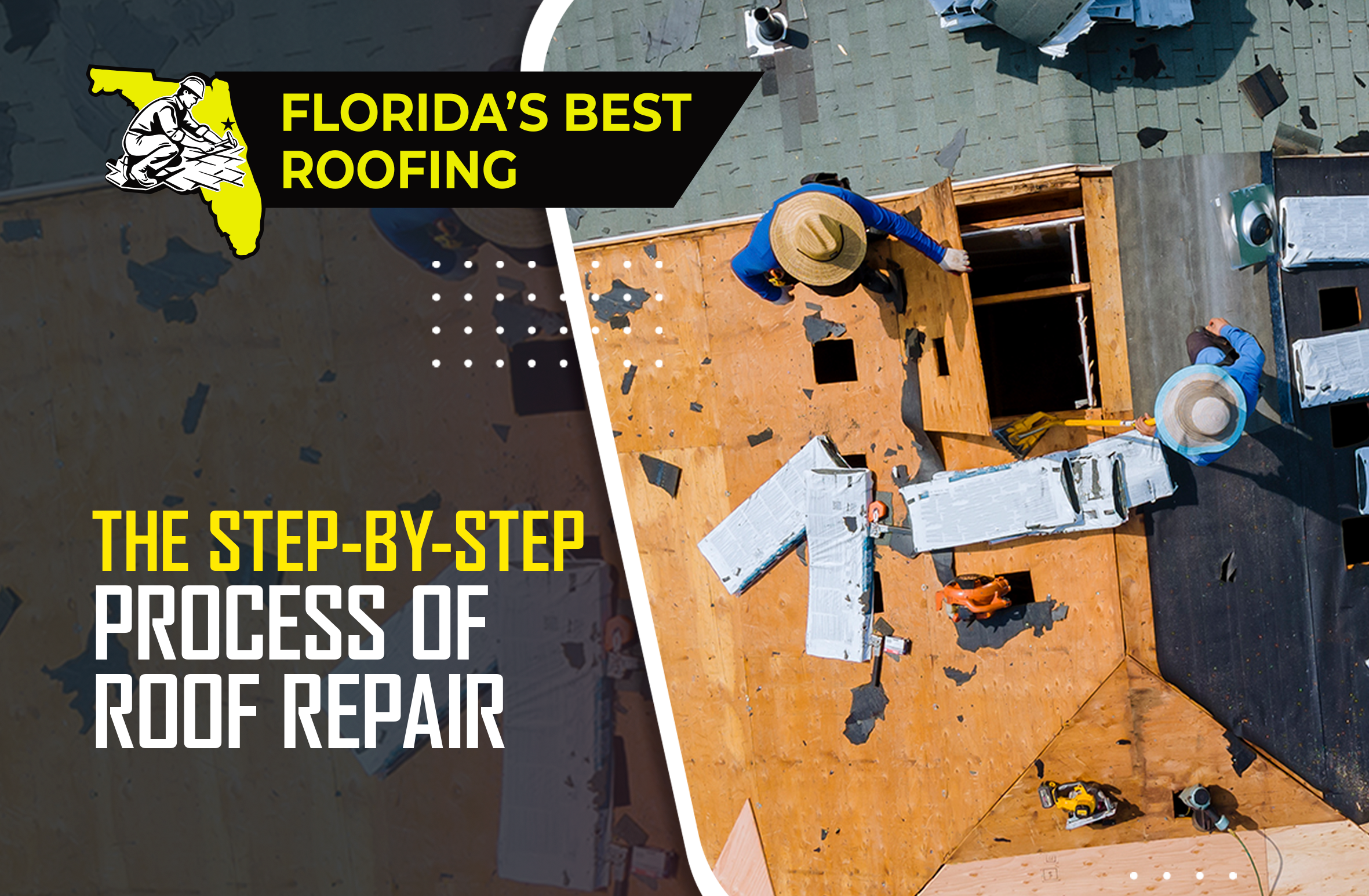It may surprise you that roof repair is more than just laying down shingle to cover damaged areas. It is a process reflecting the investment you make in your property, and one which any homeowner will eventually have to deal with. For these reasons it is important that you make yourself familiar with what goes into roof repairs and the decisions that must be made. Whether you plan on making the repairs yourself or hiring a professional roofing contractor, it will benefit you to know what this process entails. Below we detail what goes into roof repairs from start to finish:
Equipment and Materials
Any reputable professional roofer is sure to have all required materials and equipment to do a proper roof repair. If you have an immediate need to make repairs and cannot wait on a contractor, it may interest you to know what exactly these materials and equipment include. Even if you plan to hire professional help, it is always good to stay informed and have a grasp of what it takes to complete a proper roof repair.
First, a good ladder is needed to get up on the roof. A shingle lift helps with delivery of materials, but is not something a DIY repairman may have on hand. Next, it is extremely important to have safety equipment or a fall protection kit, which typically includes rope, a safety harness, and roofing anchor. Roofing can be dangerous work and anyone going up on a roof needs to be prepared in order to avoid accidents.
Tools are required for removal of damaged material and installation of new material. These can include roofing nails, a hammer or nail gun, sealant, a utility knife, chalk, and a crowbar or putty knife. Finally, the new material to be installed is not only shingles, but also may include plywood, underlayment, flashing, vents, and drip edge.
Not all of these items are required for all roofing repairs; at the same time, more complicated repairs may require special equipment or materials. It is always recommended to hire a professional contractor to make this determination. If this is not possible in your situation, you should at least consult a roofer, roofing inspector, or other roofing professional to assess your situation and make sure that nothing is overlooked.
The Extent of Repairs
The first step in undertaking a repair is to determine the extent of repairs needed. Even more basically, the question to ask is whether the roof can be repaired or does it need full replacement? Below is some advice on how you may be able to make this determination yourself; however, it is always best to get the opinion of a professional. Most reputable roofing companies offer free estimates, and it is a good idea to take advantage of this and consult with one or several contractors.
Here are some signs that a repair will suffice, provided that the rest of the roofing system is in decent working condition:
Missing shingles: A few missing shingles can typically be replaced fairly easily. This must be done ASAP since missing shingles make the underlayment and decking vulnerable to the elements. If the roof is older, over 15 years old, then even a few missing shingles may warrant roof replacement due to the brittleness (breakability) of the adjoining shingles.
Cracked or Torn Shingles: Unless this condition is widespread across the whole roof, these can often be replaced individually. Occasionally, the existing cracked or torn shingles can be mended with sealant.
Broken Shingles: Shingles with pieces broken off no longer function as they should and allow the elements to penetrate to the underlayment and decking. Shingles that are missing pieces must be replaced.
Conversely, these are signs that a repair will not be sufficient and the whole roof should be replaced:
Signs of Aging: A roof with extensive signs of aging should ideally be inspected for damage and in many cases replaced. These signs include sagging, mold growth, discolored roofing, sitting water, and loose (flapping) shingles.
Curling: When shingles curl and you see the slope start to take on a wavy shape, this means that the shingles are past their life expectancy and are no longer fulfilling their function.
Granule Loss: Granules, the rough sandy bits covering asphalt shingles, provide UV and water protection. If shingles have lost their granules with age or due to weather they must all be replaced.
Steps to Roof Repair
After determining the required extent of repairs and getting together necessary equipment and materials, the repair process can commence. Here are the steps to that process:
Inspection: This is a three step process. The initial inspection determines the extent of necessary repairs and materials required for those repairs. A secondary inspection occurs when the damaged material is removed in order to determine if the decking is still intact or if this too needs to be replaced/repaired. The final inspection occurs after all repairs are done in order to make sure that all repairs were performed properly and the roof functions as it should.
Protection: This comes in the concrete and the abstract. One method of protection is a tarp that safeguards your roof before repairs begin and while they are taking place. Another is a dumpster trailer which will allow for disposal and prevent litter in the yard (this is typically provided by the contractor, if you choose to hire one). Finally, if you do hire a contractor make sure that they have a valid license and insurance and a clear contract for you to sign ensuring your legal protections.
Tear-Off: Old or damaged shingles and underlayment must be torn off to make room for new material and to allow you and the contractor to inspect the roof decking for damages. This can affect a small area for a small repair or the whole roof for roof replacement.
Prep: The roof must be prepared for new shingles. The decking is inspected and replaced where needed. The decking is also renailed up to current building codes. Then, underlayment is installed across the affected area along with any necessary new vents, flashing, valley metal, drip edge, etc.
Shingle Installation: Once the roof is prepped and thoroughly checked for any issues, it is ready for the new material. New shingles are laid down according to their type and manufacturers’ requirements. In the case of a repair, they are integrated into the existing roofing system.
Clean Up and Final: At the end the site is cleaned up of all debris and the property is checked for any loose material, such as nails. The dumpster trailer is also removed. In the case of a very large repair or roof replacement an inspector from the county or city building department is then sent out to make sure everything was installed and will function optimally.
It is important to be informed on the roof repair process no matter the scale of your repairs, from a couple missing shingles to full roof replacement. If you have any questions about a roof repair or the condition of your roof in the Palm Coast, Flagler, or Volusia area, please give Florida’s Best Roofing a call at 386-263-7906!



